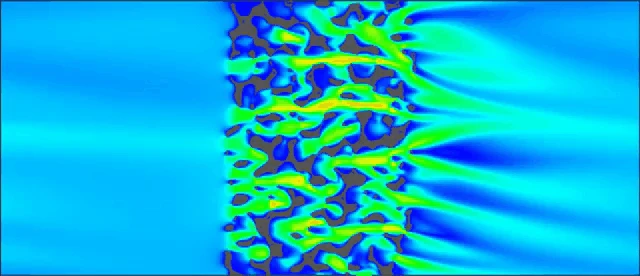As someone passionate about sustainable living and clean water, I’m often asked about the best ways to purify water at home. One technology that consistently stands out for its elegance and effectiveness is the ceramic water filter. It’s a method I’ve personally used and trusted for years.
But what exactly is the process of ceramic filtration? It seems simple on the outside—you pour water in, and clean water comes out—but the science happening inside that ceramic candle or pot is fascinating. Let’s dive in.
The Core Principle of Ceramic Filtration: Nature’s Sieve
At its heart, ceramic filtration is a form of mechanical filtration. Think of it as an incredibly fine sieve. The filter element, typically shaped like a candle or a pot, is made from natural clay and a combustible material like sawdust.
During the manufacturing process, this mixture is fired in a kiln. The heat sinters the clay, but the sawdust burns away, leaving behind a complex network of microscopic pores. These tiny tunnels are the key to the entire system—they’re small enough to block harmful pathogens but large enough to let water molecules flow through via gravity.
The Two-Step Ceramic Filtration Process in Action
When you use a ceramic filter, two critical processes are working together to protect you.
-
Physical Trapping (The Sieve Effect): As contaminated water passes through the pores, larger particles simply can’t fit. This effectively removes:
-
Sediment like dirt and rust.
-
Protozoan cysts (e.g., Giardia and Cryptosporidium), which are a major cause of waterborne illness.
-
Most bacteria, including common threats like E. coli and Salmonella. The pores are typically rated at less than 1 micron, which is smaller than these bacteria.
-
-
Electrochemical Attack (The Silver Boost): Most high-quality ceramic filters, including the one I use, are impregnated with colloidal silver. Silver nanoparticles are a powerful bactericide. When microorganisms contact the silver, it disrupts their metabolic processes, effectively killing them. This provides a crucial second line of defense, ensuring that any trapped bacteria don’t multiply inside the filter.
So, the process isn’t just about trapping contaminants; it’s about neutralizing them, which is a significant advantage.
The Simple User Experience: From Tap to Glass
From a user’s perspective, the process is beautifully straightforward. My countertop system consists of two stacked buckets. Here’s my daily routine:
-
Step 1: I pour untreated tap water (or water from another source) into the upper chamber.
-
Step 2: Gravity slowly pulls the water through the ceramic filter element. This isn’t a fast process—it drips patiently into the lower, clean-water container. This slow drip is a sign that the filtration is thorough.
-
Step 3: I simply turn the spigot on the lower container to dispense perfectly clear, safe drinking water.
The One Crucial Maintenance Step
The only regular maintenance required is cleaning. Over time, the outside of the filter cake gets clogged with the sediment it has trapped. I simply take the filter out every week or two and gently scrub it with a soft brush under running water. This restores the flow rate and keeps the system working efficiently for years.
What Ceramic Filters Do (and Don’t) Remove
It’s important to have realistic expectations. Ceramic filtration is brilliant for certain contaminants but has limitations.
-
It Effectively Removes: Turbidity, parasites, and bacteria. This makes it a highly effective water purification method for most biological contaminants.
-
It Does NOT Remove: Dissolved chemicals, heavy metals, viruses, or salt. Viruses are smaller than the filter’s pores, and chemicals pass right through. For comprehensive protection against viruses and chemicals, you’d want a system that combines ceramic with a technology like activated carbon filtration.
Final Thoughts
Understanding how ceramic water filters work gave me great confidence in choosing this technology. Its combination of simple physical filtration and the natural disinfecting power of silver makes it one of the most reliable and sustainable point-of-use water treatment solutions available.
It’s a testament to the idea that sometimes, the simplest solutions are the most powerful.
What’s your experience with water filtration? Have you considered a ceramic filter for your home?


